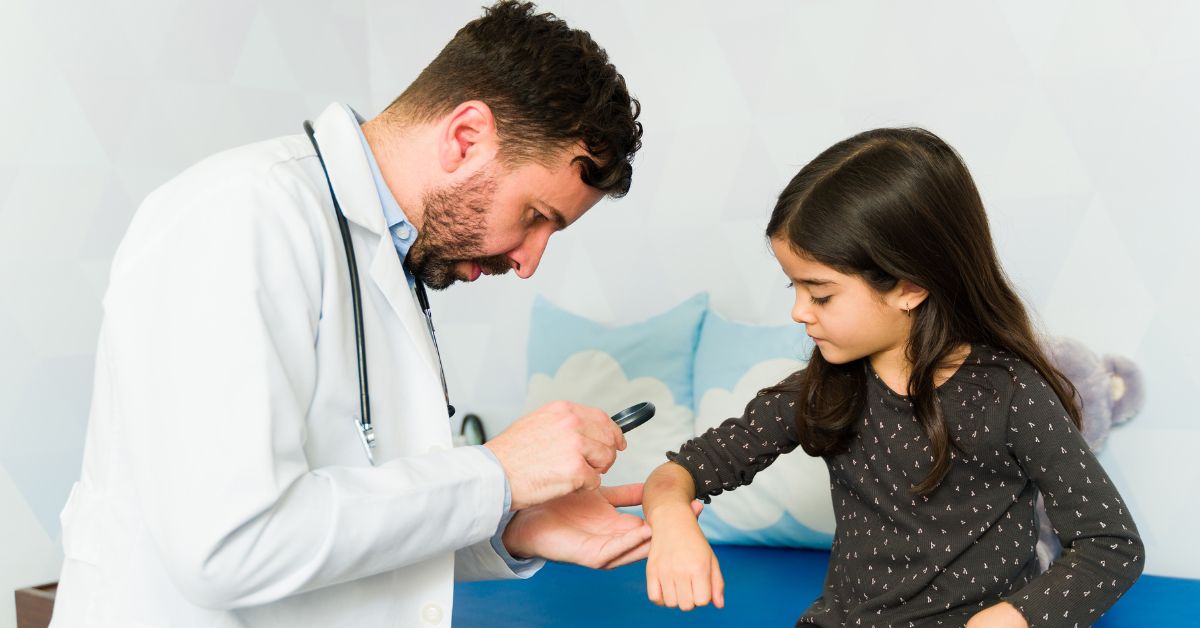Spending time outdoors is fun – until a bug bite or sting ruins your day. Whether it’s a mosquito bite at a picnic or a sting from a bee or wasp during a hike, knowing what to do next is important. Most bites and stings are harmless and can be treated at home. But sometimes, insect bites and stings treatment requires medical intervention.
If you get a bug bite or sting that requires seeing a provider, know where your nearest urgent care clinic is.
Common insects that bite or sting
Many insects bite or sting to protect themselves. Some are more of a nuisance, while others can cause pain, swelling or even a dangerous allergic reaction. Insects that commonly bite or sting include:
- Mosquitoes
- Bees
- Wasps
- Yellow jackets
- Fire ants
- Spiders (including black widow and brown recluse)
Knowing which insect caused the bite or sting can help you figure out how to treat it and whether medical help is needed.
Bug bite reactions
Flying insects like mosquitoes, flies, bees and wasps can be annoying. Crawling bugs, such as bedbugs, spiders, ticks and fire ants, are also bothersome. It can be tough to figure out what insect bit or stung you. There are a few telltale signs though, including these:
- Bedbugs: If bedbugs bite you indoors, you’ll develop red, itchy, welt-like marks on your body.
- Fire ants: If you’re stung outdoors by red fire ants, you’ll know it from the intense burning sensation at the bite sites. This lasts a few hours or days.
- Flying insects: If you get a sting or bite from a flying insect, you’ll usually get itchy red bumps that clear up in a day or two. There are many different flies, but black fly bites leave small puncture wounds and cause what seems like allergic reactions. Bees and wasps leave their stingers or they fall off your skin right away. This leaves a red mark.
- Spiders: When a harmless spider bites you, their small fangs feel like pinpricks. The bite will turn into a small red mark that may look like a whitehead.
- Ticks: If you get a tick bite, look for two rashes. One is a red bullseye rash, which requires antibiotics for Lyme disease. A Rocky Mountain spotted fever infection needs immediate treatment. This looks like a red rash made of tiny dots.
How to treat a bug bite or sting right away
Here are the basic first steps to treat most insect bites or stings:
Wash the area with soap and water
As soon as you notice it, gently wash the site of the sting or bite with soap and water. This helps clean the area and prevent infection.
Apply a cold pack or ice
Use a cold pack, ice pack or some ice cubes wrapped in a towel to reduce swelling and numb the area. Apply it for 10 to 15 minutes at a time. This helps with pain and keeps the reaction from getting worse.
Remove the stinger (if there is one)
If you’ve been stung by a bee, check for a stinger in the skin. If you see one, gently scrape it out using the edge of a credit card or your fingernail. Try not to use tweezers, since squeezing the stinger can push more venom into the skin.
Reduce itching and swelling
To ease itching and discomfort, apply calamine lotion, hydrocortisone cream or an antihistamine cream to the area. Taking an oral antihistamine can also help, especially if the reaction is stronger than expected.
At-home insect bites and stings treatment
In most cases, you can treat bites and stings at home. Here’s what a normal reaction might look like:
- Redness or swelling at the site
- Mild pain or itching
- A small bump or welt
These symptoms usually go away within a few days. Cold packs, creams and rest are usually enough to feel better.
When to see a doctor
Not every reaction is mild. In some cases, insect bites or stings can be dangerous. You should get to an emergency department right away if you notice:
Signs of a severe allergic reaction:
- Trouble breathing or shortness of breath
- Swelling of the face, tongue, lips or throat
- Dizziness or fainting
- Fast heartbeat
- Nausea, vomiting or stomach cramps
- Hives or a full-body rash
These symptoms could be signs of anaphylaxis, a life-threatening allergic reaction. If you or someone else shows these signs, call 911 right away. People who are allergic to bee, wasp or yellow jacket stings may carry an epinephrine auto-injector (like an EpiPen) to treat this reaction quickly.
Signs of infection or worsening symptoms:
- The bite or sting becomes more painful over time
- Redness or swelling spreads beyond the affected area
- There is pus or yellow fluid coming from the wound
- Fever or chills
These signs may mean the bite or sting is infected and needs treatment from an urgent care provider. Ignoring a bug bite can lead to cellulitis, a common bacterial skin infection that needs antibiotics. Contact your doctor if you see red streaks, spots or dimpling or feel tenderness that won’t go away.
Insects bites and stings that may need medical treatment
Some insects and spiders can cause more serious problems than others. Here are a few to keep in mind:
Black widow spiders
These spiders have a shiny black body with a red hourglass shape on the belly. A spider bite from a black widow can cause muscle pain, cramps and even trouble breathing. Get medical help right away if you think you’ve been bitten.
Brown recluse spiders
These spiders have a brown body with a darker violin-shaped marking. Their bites can lead to skin damage, blisters or open wounds. You may not feel much pain at first, but the area can become worse over time.
Bee, wasp and yellow jacket stings
These insects are part of the same family and can all deliver painful stings. Bee wasp and yellow jacket stings can cause swelling and redness. For some people, these stings cause a severe allergic reaction that needs emergency care.
Preventing insect bites and stings
You can lower your chances of getting bitten or stung by taking a few simple precautions:
- Use insect repellants with DEET or other approved ingredients.
- Wear long sleeves and pants when spending time outdoors.
- Don’t go barefoot in grassy areas.
- Stay away from nests or hives.
- Avoid using strong perfumes or scented lotions that attract insects.
- Keep food and drinks covered outside.
- Be calm around stinging insects – don’t swat at them.
If you know you’re allergic to certain insect stings, talk with your primary care provider. You may need to carry an epinephrine auto-injector or wear a medical ID bracelet.
How we can help
If you’ve been bitten or stung and notice unusual symptoms, or if the area becomes swollen, painful or infected, an urgent care provider can help. Urgent care doctors can treat allergic reactions, prescribe medication for pain or infection and help you create a plan for avoiding future stings or bites.
If you’ve had a serious reaction before, a provider may also refer you to an allergy specialist for testing or long-term care. Know where the nearest urgent care is to get care quickly in the event you need it.
Learn about the urgent care services offered at Bon Secours.





